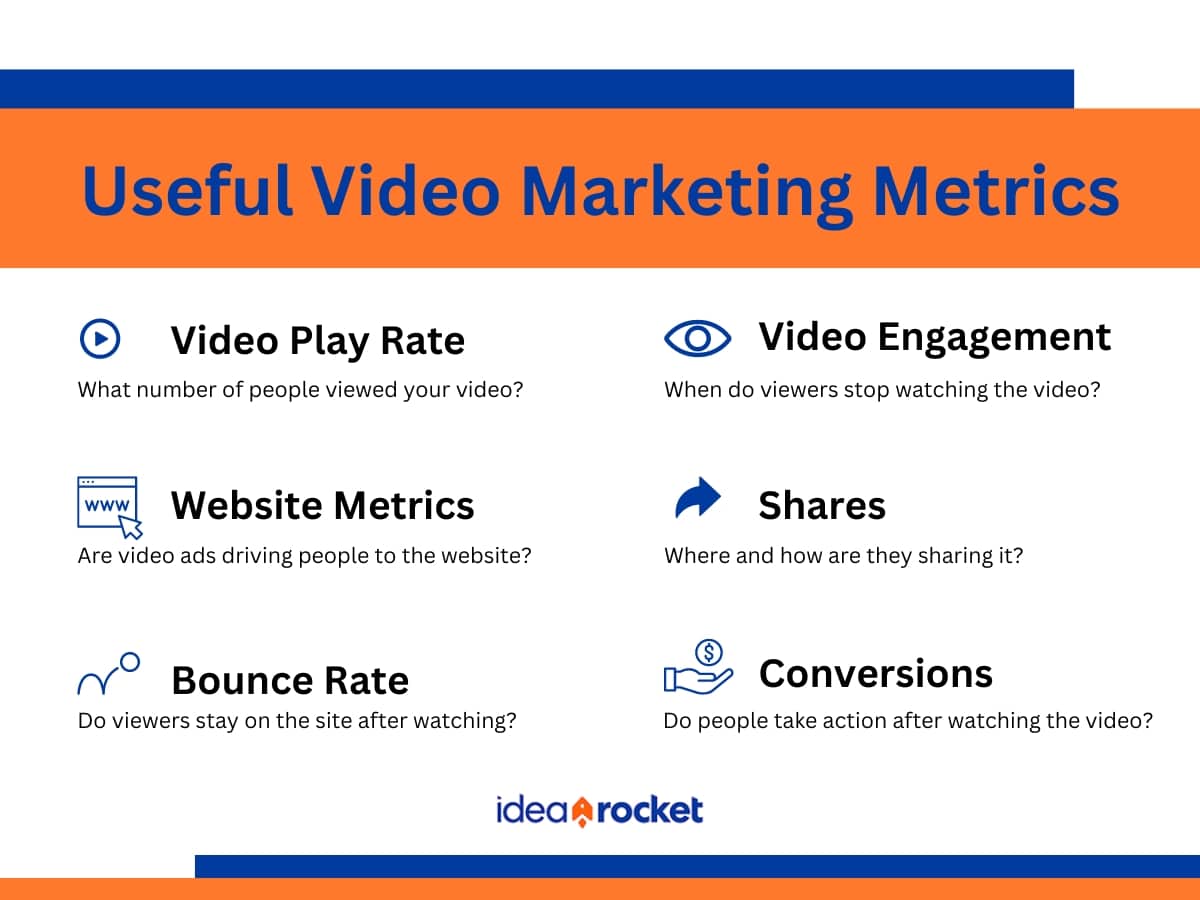We all know that video is a powerful marketing tool. It can capture attention, increase engagement, and improve brand recall. But, in marketing it’s not enough to just know, you have to be able to measure results. Video marketing metrics help you do just that.
Tracking the right metrics doesn’t just help you measure video ROI. It can also show you how to improve your content and target videos effectively. Here’s how to use metrics in your next video marketing campaign.
Define Video Marketing Objectives
“Does your video content marketing contribute to higher sales?” That’s the first question you should ask, according to Matt Erikson, Marketing Director of National Positions. He notes that the answer is “rarely so simple.”
It can be difficult to trace a sale back to a specific campaign because the results are often cumulative. It’s much easier to focus on specific campaign goals. Are you trying to tell people about your brand, influence consideration, or encourage them to take action?
Basically, campaigns can have one of two high-level marketing objectives:
- Knowledge-based campaigns are designed to boost brand awareness or educate people about your brand. They speak to customers at the top of the funnel. Metrics like reach, impressions, engagement, click-through-rates (CTR), social shares, and website visits can help you measure success.
- Action-based campaigns inspire viewers to take a specific action. You might ask them to buy, download a piece of content, or request more information. To measure success, you can track downloads, leads, cost-per-lead or even sales.
Measure Content Quality Based On Video Marketing Metrics
So far we’ve been talking about metrics that measure your whole campaign. But, video campaigns can succeed or fail on the strength of their videos. Don’t forget to track metrics that show how well the video itself is performing.
Some of the most useful video metrics to track include:
- Video Play Rate: What number of people viewed your video?
- Website Metrics: Are video ads driving people to the website?
- Video Engagement: When do viewers stop watching?
- Bounce Rate: Do viewers stay on the site after watching?
- Shares: What are people saying about the video? Where and how are they sharing it?
- Conversions: Do people take action after watching the video?

Any of these metrics can be key performance indicators (KPIs) for your video. Just be careful that you don’t use any of them as the sole indicator of video success. Your real goal is to influence people, not just have them watch the video and move on. Numbers like your view count can easily become vanity metrics if you narrow your focus too much.
Set Benchmarks Before Launching A New Video
Metrics aren’t all that useful on their own. They need to be measured against something. That’s where benchmarks come in handy.
Before you launch a new video, note the performance of your existing campaigns. Check your website metrics, bounce rate, and conversion rate. Those numbers can serve as benchmarks for your new video.
Gathering benchmark data might also reveal performance gaps. If certain ads or web pages aren’t performing as well as you’d like, they might be good places to add video.
“Try adding video content to that page and test these metrics again in 30 days,” Erickson said.
Just be careful not to change too much at once. Imagine you revamp the text, change the call to action (CTA), and add a new video. How will you tell which of those changes made the difference?
Test, Target, and Optimize
Monitor your video marketing metrics to refine your strategy and content over time. Regularly checking on video metrics can reveal insights that improve future videos. For example:
“If you are running a YouTube video campaign, see where the majority of users are dropping off from watching, and use this information when building your next video,” Erickson said. “If 67 percent of viewers are skipping after watching 20 seconds of your ad, see what message is happening that is causing this, create a new edit, and test again.”
Use play and engagement to learn what kinds of content interests your audience. Try A/B testing different videos to understand which videos perform best for which target audience.
As you get to know your audience, you can create videos to target them at different levels of the marketing funnel. You might even create a lead scoring system to understand where viewers are in the funnel.
Keep Ongoing Video Metrics Reports
Sharing performance records with your team can help you make the case for video marketing. It can help justify spend when requesting budget. Long-term records also help you spot trends in audience behavior that may shift over time.
“Create a report with specific numbers and data, which you can usually gather from your video hosting platform, and present this data using a compelling story to leadership to prove ROI,” Stacy Caprio, Founder, Accelerated Growth Marketing, said. She recommends tagging video links with UTM codes. These useful bits of code let you track which clicks resulted in product page views and sales.
Leveraging Video Marketing Metrics
Video can be used to elevate your marketing strategy in a number of ways. Video marketing metrics help prioritize your efforts so you get the results you want.
For help creating your next marketing video, contact the video experts at IdeaRocket. Let us bring your next project to life.



